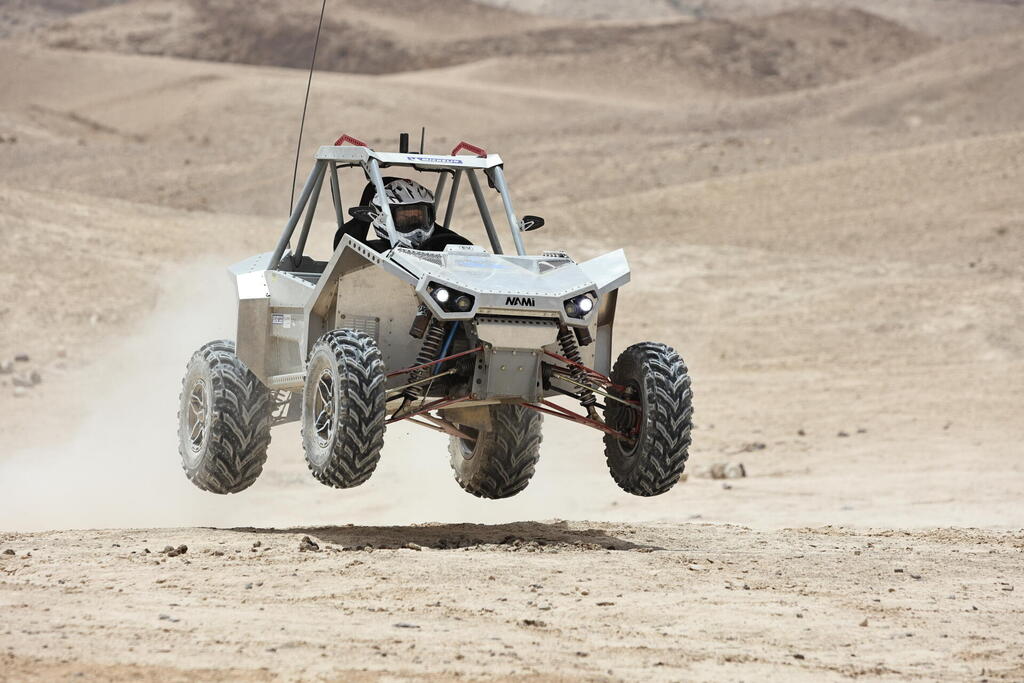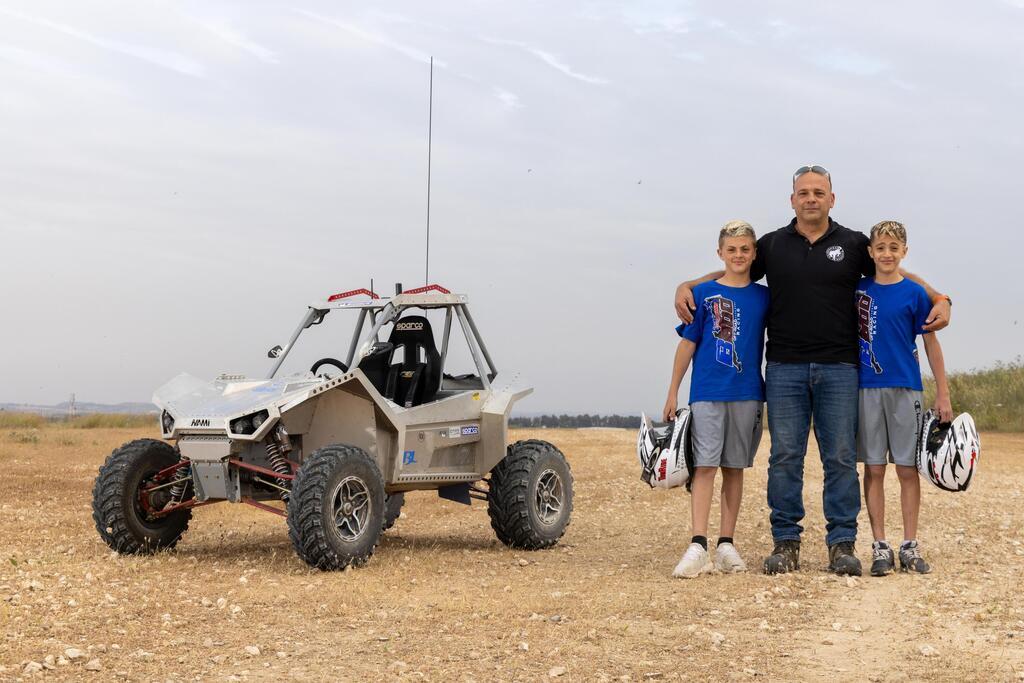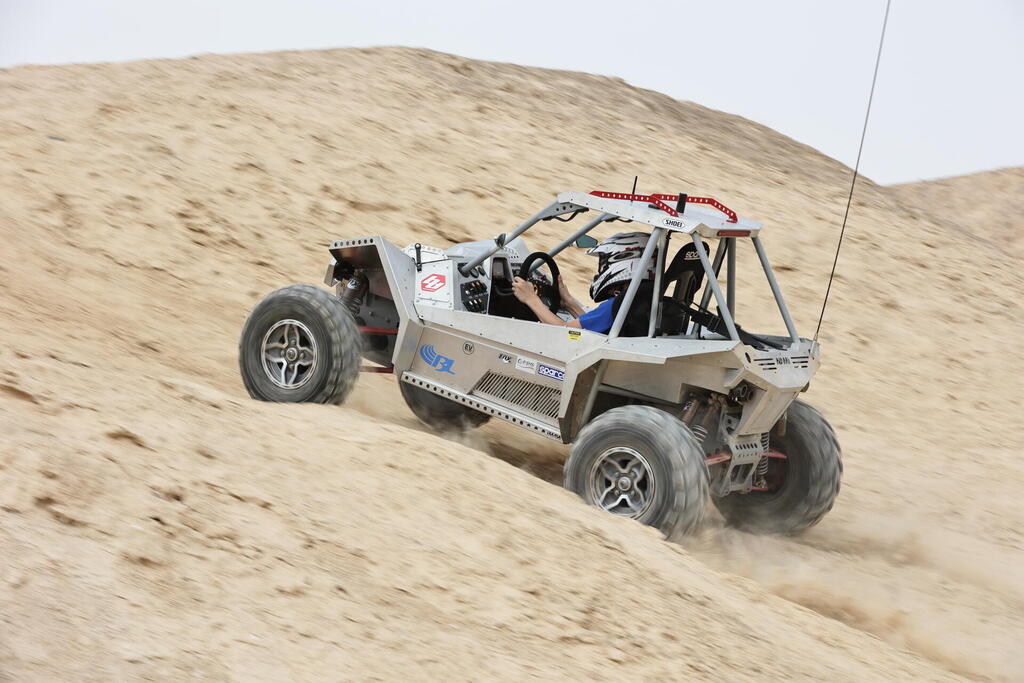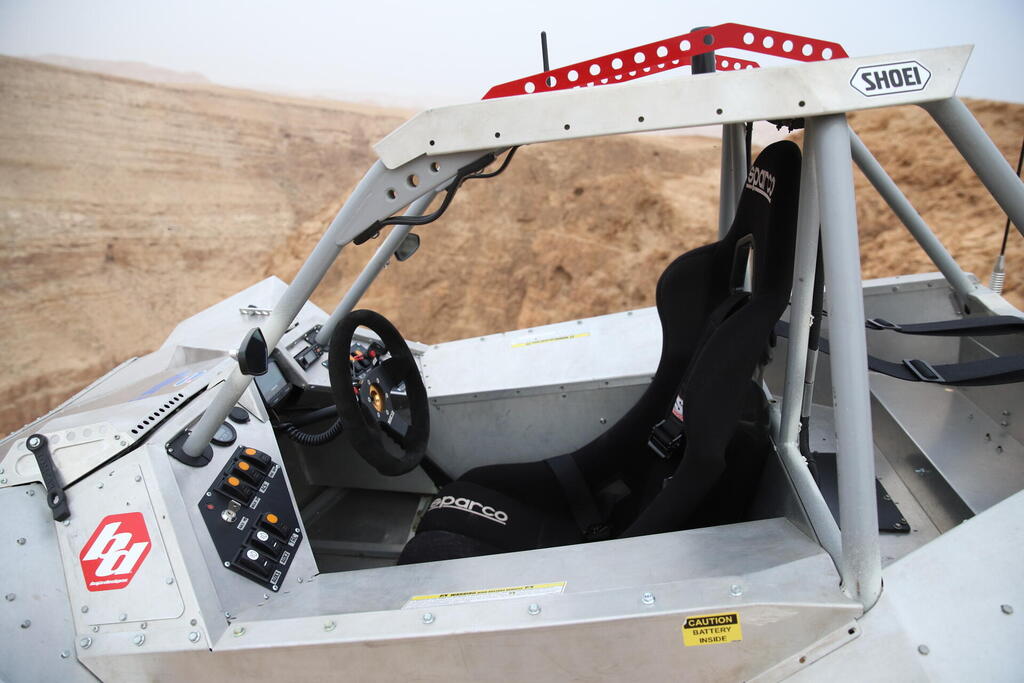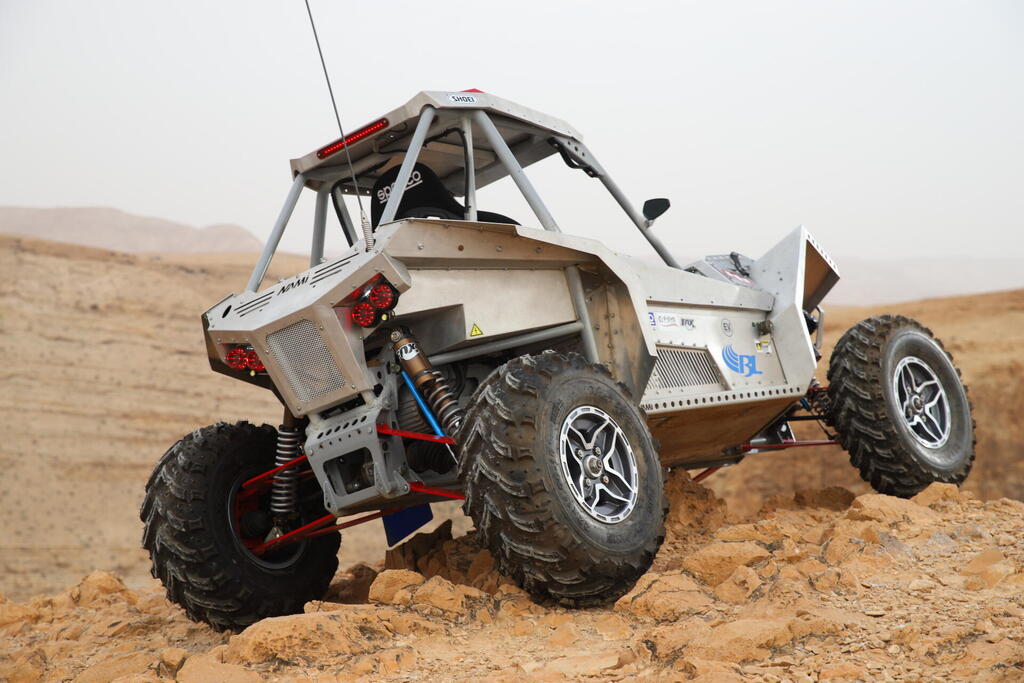Getting your Trinity Audio player ready...
Daniel and Elay Hacohen received an extraordinary gift for their Bar Mitzva, a modest off-road vehicle if small dimensions, with extreme capabilities, and the closest thing to an off-road racer vehicle.
That's what you can get, when your dad's one of the most talented car engineers in Israel.
Six years after we saw the first blueprints of the NAMI off-road vehicle, the unique prototype of this extraordinary automobile is now in its final phases of adjustments, before the project is completed.
Yes, it took longer than expected to complete, but mainly because integrating an electric propulsion system into an off-road vehicle is a huge challenge that even the biggest manufacturers in the industry, struggle with.
Gili Hacohen, the man behind the idea and the design, named his brand NAMI, in the name of his spouse Na'ama, which makes it only the second car brand in the world named after a woman, and joining the prestigious Mercedes.
Hacohen is one of the most well-known and respected characters in Israel's motor scene, mostly due to his past as one of the most successful off-road drivers, but mostly because he is one of the top car engineers in the country.
Hacohen also serves as a senior consultant to the REE start-up company, as well as to Elta Systems, Rafael Advanced Defense Systems, and Elbit Systems.
The original idea for the design of the vehicle was for his twin children, Daniel and Elay, who had their first off-road experience on an electric ATV.
Typically, the next step for children who take their first steps in the motor world, usually involves moving into a dirt bike, but Gili preferred his sons to drive in an automobile with a roll cage that could protect them. Hence the idea for the development of the NAMI off-road vehicle.
His sons were originally supposed to receive the finished vehicle as an eight-year-old birthday present, which is the minimum age for driving it. But as we mentioned, the development process took more time than expected.
The first test drives took place this year, and they were meant to examine if the automobile is suitable for marketing, and not just as a family amusement.
NAMI off-road vehicle
(Video and edit: Shay Druyak)
The vehicle went through many trials including stability tests on different surfaces, climbing capabilities, and jump-offs to high altitudes. And so far, the automobile has traveled no less than 4,000 kilometers (2,485 miles) in a variety of extreme terrain.
According to Hacohen, when he built the vehicle he combined all of the technical knowledge that he had gained over the years.
"The combination of capabilities here is unique, with fast track-driving capability, along with high-level navigability in and an efficient and quiet electric propulsion. And all without compromising anything on safety," Hacohen said.
"My mother always reminds me of how fearless I was as a child, and how many times I took it all to the edge. These qualities were passed on to my children as well. And so it was important for me to make sure they are safe while driving," he said.
Hacohen says the car sits on an integrated pipe chassis which creates a safety cage according to racing standards, and the structure is twice as strong as required for a racing vehicle.
The young driver (or small size) sits in a deep designated sports bucket seat with five docking points and with a removable steering wheel. The measurements of the vehicle are 223 cm (88 inches) long, 140 cm (55 inches) wide, and a modest 225 kg (500 pounds) weight. That means there is no problem loading it on a truck box or dragging it by small hauling trailer, attached to any standard family car.
Back to the big challenge - integrating the electric propulsion system. Hacohen says that he chose a clean propulsion system not only for environmental reasons but also because of the nature of the power supply, which is more efficient than gasoline engines. It is also easier to calibrate it to its optimal function.
But testing the durability in difficult terrain that includes dust and mud, and calibrating the power transfer system that offers an infinite number of options, is no longer a matter of theory, but one of long and hard work.
The propulsion system includes two electric, rear and front motors with 13.5 horsepower each.
Each of the motors drives the wheels close to it, including a dual-wheel drive with a computer-managed face-to-back power direction.
For fans of overdrive, the front engine can be canceled, creating modest rear-wheel-drive vehicle. The young test drivers were particularly appreciative of this by driving fast tracks.
There are four driving options in the car. Starting with a "walking" option, limiting speed to 6 km/h (3.7 m/h) - allowing safe and easy driving for young fits time driving children. The most extreme option is "competition," with full engine power, and a maximum speed of 70 km/h (44 m/h.) However, that option can only be activated by a dedicated key.
There is also the possibility of controlling the intensity of the regeneration that returns energy to the battery during a slowdown, And it can also be used as downhill control or pedal driving, that stops the vehicle when a driver lifts his foot off the throttle.
Concerned parents will be able to be updated with real-time data in an app, where different data will be reported (engine heat, G-meter, battery status, range, speed, and more). And they will be able to limit maximum power and speed to various levels, all the way down to a complete shutdown.
The lithium-ion batteries are fully explosive or flare-resistant, and are installed on the longitude beams of the vehicle between the front and rear axles. The purpose of this location is to maintain a low center of gravity, balanced weight distribution, and exceptional ventral gap (29 cm).
The travel range is approximately 80 km (49 miles) and a full battery charge takes approximately three hours. To stay gripped to the ground there is a double-wishbone suspension in each corner, with a hand-directed Fox Shox 1.5 podium brakes and impressive suspension move (32.5 cm behind and 28.5 cm front).
The initial acceleration is impressive and immediate, and it's expected, just as I could bet that the chassis mix, the implants, brakes, and steering can handle an engine a few times more powerful. In this situation, it is difficult for the vehicle to lose balance, even in extreme conditions and at maximum speed.
The estimated cost of the NAMI off-road vehicle is $30,000 for the final version that was tested, but there will also be a basic version in the future with a price tag of some $10,000.


